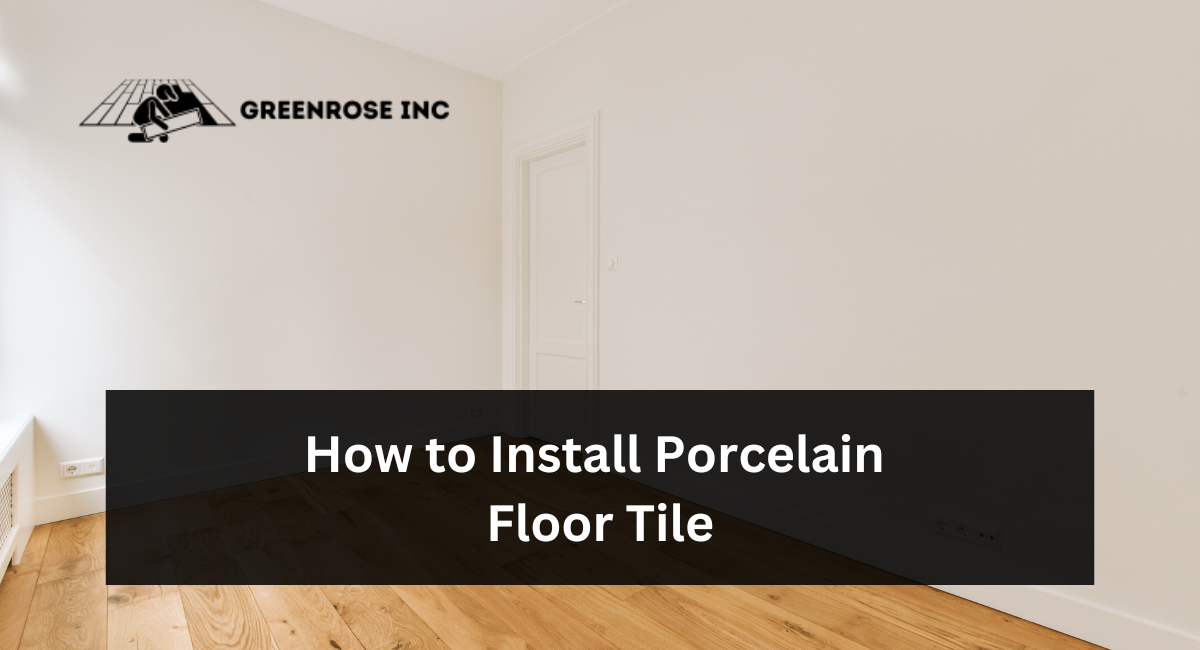Porcelain tile adds a beautiful finishing touch to any room. Perfect for both floors and walls, porcelain is highly durable yet still cost-effective due to its dense material properties – however, its density makes it more expensive than ceramic.
Like other types of tile, porcelain must be sealed to avoid staining. Furthermore, its weight makes it less suitable for upper-floor environments.
Layout
Porcelain tile has become an increasingly popular choice in bathrooms, laundry rooms, and patios due to its ability to withstand water damage.
Furthermore, porcelain comes in many styles and colors to complement its durability; some varieties can even mimic marble or natural stone in its look!
Unfortunately, installing porcelain tiles yourself can be time-consuming and challenging; professional tile contractors can save you time and energy by performing installation services.
Though porcelain tiles may appear similar to other tile forms, their composition and manufacturing processes differ.
Each bisque tile, also known as the body of a porcelain tile, is tailored for a specific use determined by factors like thickness, composition, firing temperature, and other considerations, class 0 being its weakest strength category.
Before beginning a porcelain tile floor installation, one of the key steps should be conducting a dry layout. This allows you to test the tile pattern and determine any adjustments that must be made, while spacers help ensure uniform grout lines.
Refrain from crowding tiles together, which could lead to premature grout failure, leakage, or water damage issues.
Preparation
Porcelain tiles are made of an alloy of fine clays and minerals fired at high temperatures to form complex, dense tiles that resist staining, water leakage, and bacteria growth.
Porcelain is available in various colors and patterns and is perfect for bathrooms or kitchen floors.
Before beginning floor tile installation, preparing the surface properly is vital. Remove any old flooring material and thoroughly clean the area. Also, install a waterproofing membrane overall sizes to protect from moisture damage and extend the lifespan of porcelain tile flooring.
Once your floor is prepared for tile, dry-laying should be undertaken to determine an optimum layout and find any uneven areas that need leveling or repair.
In addition, take this opportunity to assess grout line location and thickness.
Installing tile floors can be an involved and labor-intensive process that should only be attempted if you know your abilities and knowledge of doing it right. Hiring professional help ensures the task gets done correctly and on schedule, should that be feasible.
Porcelain tiles may be durable but are less comfortable for walking on than other flooring materials, particularly without radiant heating during colder weather. Furthermore, porcelain tiles can weigh significantly more and cause structural damage if your home rests on shifting soil conditions.
Installation
Porcelain tiles are stunning additions to any room, adding character and elegance. Available in an array of colors, sizes, and designs to meet the needs of any space – you are sure to find your ideal tile! Not only that, but these durable tiles make an excellent choice for busy environments; even heavy furniture won’t damage them!
Before deciding on porcelain tile flooring, you must understand all its benefits to justify its higher price point and select an option best suited to your space. By learning all this information, you will make an informed choice and justify its purchase cost more efficiently.
After installing tiles, they must dry for at least 48 hours, depending on your manufacturer. After that, grouting them is essential as it provides additional rigidity to your floor while keeping spaces between tiles tidy – and giving your whole floor a uniform look.
If you’re installing porcelain tile, it is wise to choose a grout color that complements its hue to avoid showing through and keep it looking new. After installation, seal all tiles to protect them from staining or water damage, but remember to wipe them down regularly with a mild cleaner.
Maintenance
Heavy and sturdy porcelain tiles require only minimal upkeep to keep looking brand new, including regular use of traditional detergents to remove everyday dirt and grime.
Proper cleaning procedures must also be implemented to prevent surface damage or deterioration, such as regularly sweeping, mopping, or using water-based cleaners.
Porcelain floor tile should be regularly swept to remove loose debris while preventing dirt from getting trapped between its glazed surfaces, leading to discoloration.
Sweeping can be performed using either a dry swifter or vacuum cleaner; alternatively, vinegar-and-water solutions or commercial cleansers may be used sparingly to clean textured porcelain tiles without discoloring grout lines.
After sweeping, use a mop or sponge to rinse the floor with warm water using either hot or warm water and mopping, respectively.
Next, scrub any tiles requiring further attention with a nylon bristle brush/toothbrush to lift any remaining dirt on their surfaces before rinsing again with hot water and drying the area using a microfiber cloth/towel.
Once the tiles have been swept clean, thin-set mortar must dry according to manufacturer specifications. Once dry, grouting should take place. Grouting adds rigidity to porcelain tile flooring by sealing gaps between tiles and preventing them from adhering together – something sweeping doesn’t do!
Conclusion:
In conclusion, installing porcelain floor tile requires careful planning, precise execution, and attention to detail. From preparing the subfloor to laying the tiles and finishing with grout, each step contributes to the overall success of your project.
By following the recommended techniques and using the right tools, you can achieve a professional-looking porcelain floor that not only enhances the aesthetic of your space but also stands the test of time. Remember, patience and precision are critical to a successful porcelain tile installation.

